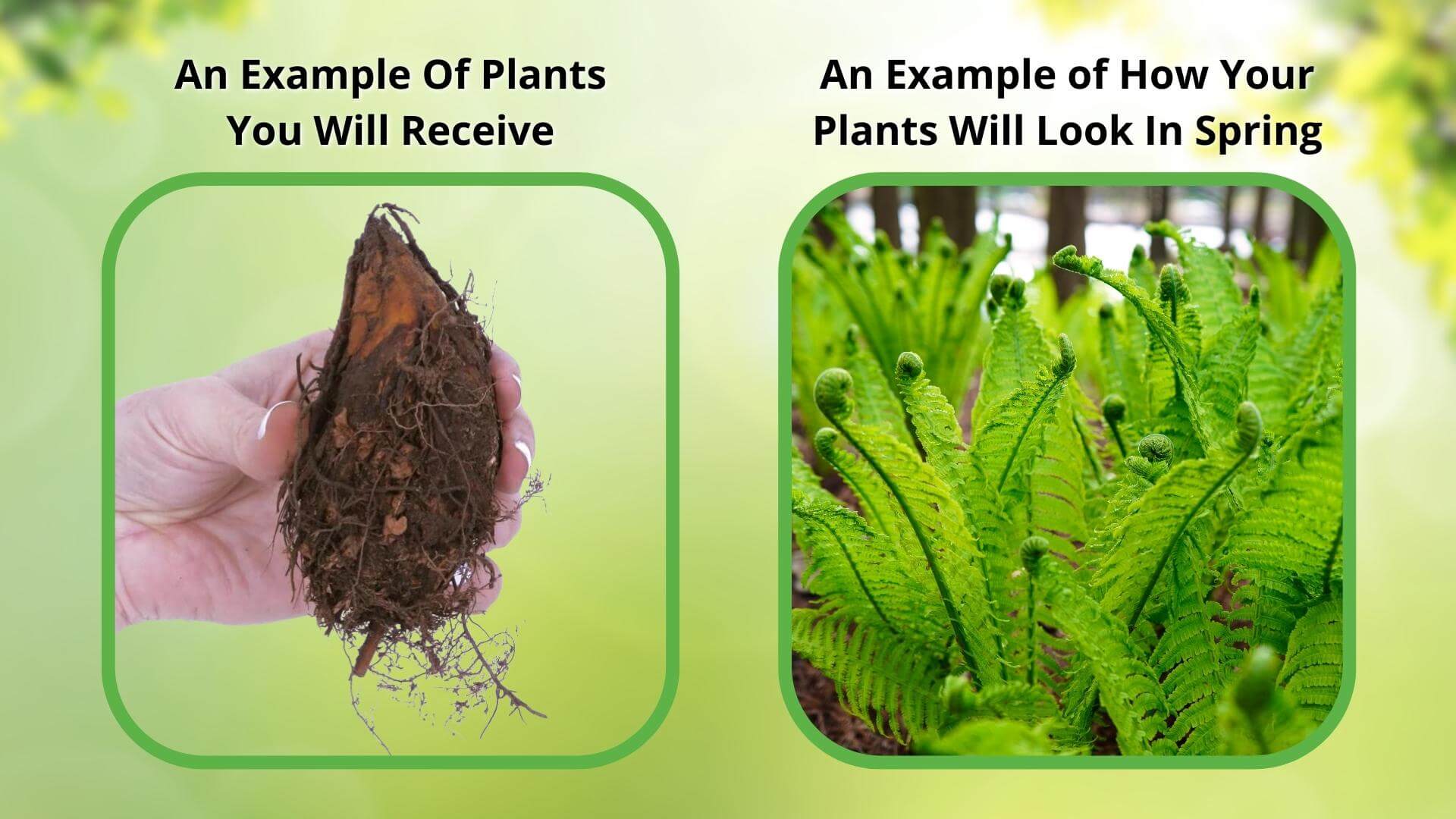Couldn't load pickup availability
🌸When you add 1 plant to cart, it automatically adds the free one
Cattail Plant For Sale | Typha
The Cattail Plant is the most iconic wetland grass everyone knows and loves. One quickly recognizes it with its hot-dog-shaped blooms between slender and breezy blades. Miraculously able to stand tall in several feet of water, this grass is truly one-of-a-kind. It is a popular go-to for gardeners looking to populate the wettest areas of a landscape, bringing several benefits other than its unique appearance. This grass provides endless visual interest for your pond or lake and is a crucial player in enhancing environmental stability.
Plant Details - Cattail Plant (Typha)
Family: Typhaceae
Light Requirement: Full Sun – Partial Shade
Water Needs: Very High
Height: 4-10 ft.
Spread: Indefinitely with clumping rhizomes
Growth Rate: Fast
Bloom Time: Late Spring - Summer
Flower Color: Brown
Wildlife Value: Provides food and shelter for wildlife, provides nesting material for birds
The blades of this grass are quite long and have a slightly waxy outer layer that provides extra reinforcement. This powerful spreader thrives in the wettest conditions possible, preferring to live in shallow water or consistently moist mud. This means they are often found naturally in marshes, along muddy banks, or in pond water. It spreads incredibly fast in clumping colonies with an indefinite horizontal spread. The memorable flowers are a solid brown upon maturity and go to seed by early fall.
Landscape Uses and Maintenance - Cattail Plant (Typha)
This powerful grass is a dynamic addition to a wet habitat. Its dense root structure holds onto wet, loose soil and efficiently controls erosion. The plant's clump-forming, densely leafed habit provides a preferred shelter for many aquatic and semi-aquatic animals, who also appreciate its materials for nesting purposes. Once planted, the Cattail Plant requires almost no maintenance, but it may be prudent to cut the plant back regularly to prevent excessive spreading; otherwise, it may quickly take over an entire area.
Noteworthy Characteristics of the Cattail Plant
The Cattail Plant is easily identified by its unique, cylindrical flowers, whose thickness and color resemble a cat's tail, which is the trait that inspired its name. When summer passes, the flowers form into dense seed heads that dry out and burst open, releasing fluffy seeds. If you take a clump of the seeds, you will notice the distinct, soft cotton-like texture.
This Is How Your Plants Will Look upon Delivery

Bloom Season
Summer
Bloom/Foliage Color
Brown
Height at Maturity
Under 10 Feet
Care
Cattail plants thrive in wet conditions, which makes them ideal for ponds or marshy areas. Ensure their soil is consistently moist and provides plenty of space for spreading roots. Prune back old stems in late winter to encourage new growth.
Plant Reproduction
Cattail spreads via rhizomes and seeds in waterlogged conditions.
How to Grow and Care for Specialty Plants for Specific Causes
Specialty plants serve meaningful purposes beyond beauty—whether it's attracting pollinators, repelling pests, preventing erosion, feeding wildlife, or creating habitat. To grow them successfully, start by understanding the specific goal of your planting. For example, milkweed and bee balm are best for pollinator gardens, while vetiver and creeping juniper are ideal for erosion control. Choose plants that are well-suited to your USDA zone, soil type, and light conditions to ensure long-term success.
Prepare the soil by enriching it with compost and ensuring good drainage. Plant during the recommended season—usually early spring or fall—and space according to mature size to prevent overcrowding. Water regularly during the first growing season to help roots establish, then reduce frequency once the plants are settled. Mulching helps conserve moisture and keeps weeds at bay.
Minimal pruning and occasional fertilizing will keep most specialty plants healthy. Whether you’re supporting bees, deterring deer, or stabilizing a hillside, these plants are powerful tools in building a purpose-driven, eco-friendly garden.
Shipping date depends on the date displayed and chosen when you order from the product's page.
We only accept returns on plants verified dead. If you think your plants have died, we offer a 1 year warranty, please use use this File a Claim Link to verify dead plants and start with return warranty process.



Caring Tips
How do I care for my Cattail Plant?
Each box contains detailed care instructions and information about your product. But here's the basics.
Care Tips
Cattail plants thrive in wet conditions, which makes them ideal for ponds or marshy areas. Ensure their soil is consistently moist and provides plenty of space for spreading roots. Prune back old stems in late winter to encourage new growth.
Light Requirements
Cattail plants thrive in full sun to partial shade. They prefer bright, direct sunlight but can tolerate some shade, especially if they receive sunlight for at least a few hours a day. Ensure they are in a moist, wet environment.
Hardy Planting Zones
3 • 4 • 5 • 6 • 7 • 8 • 9 • 10 • 11
All look healthy and ready to plant.
I love using your store because you have the native plants I'm looking for. The deliver is always quick because I live in Tennessee. Its nice to order locally. I havent planted the cattails yet but they arrived damp and in a bag, and I'm confident they will work because I've ordered from TN Nursery before. I had good results.
Looking forward to seeing them grow.
I’ve **** grown cattails before this is a new experience for me. I love this company and know I’ll have success
Thanx Y’all
Nessa 🇺🇸🇺🇸
Excellent. Was alerted the day they picked, the day they were shipped, and got regular updates from the shop about where the plant was. And when it arrived, the roots were still wet, white, and lively. Excellent plants once again. Thank you!




